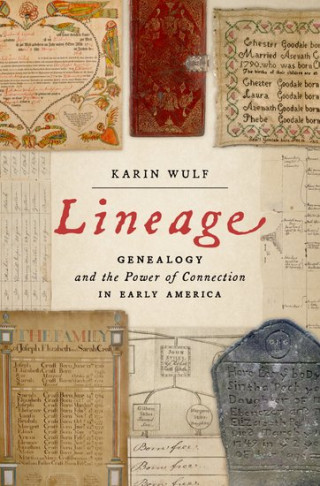Just as it is today, genealogy was a mix of practical uses and meaningful memory, confirming connections with family near and far, recently or long gone. Family history was interesting to ordinary people and elites alike, including everysingle founding father. Men and women, as well as younger and much older folks, kept, shared and treasured family records like the one Hannah wrote about the Watermans. They learned about the importance of genealogy in what they read and what they were taught. In girls’ schools in the later 18th and early 19th centuries, for example, family records were a familiar template for learning needlework. Marvelous examples of family history samplers survive in libraries, archives and museums. Presumably, many more are still treasured as heirlooms.
Just as they do today, governments in early America collected family history data, and the media was fascinated by the genealogies of famous people. First the Colonies and then the early American states required, in some fashion, the collection of vital information, like births, marriages and deaths. This kind of data wasn’t systematically or centrally kept and collected until much later, in the 19th and 20th centuries, but we can still see both an interest in and an effort to record family history in this earlier period.
Local authorities and clergymen compiled vital records, which could then be recalled and used by families if they needed to check particular information or by the government for official business. In Colonial New England, for example, residents were eligible for (very minimal) financial relief if they were born in a specific town and fell on hard times. But those who didn’t “belong” in a place, like outsiders and newcomers, could be expelled under a system known as “warning out.”
/https://tf-cmsv2-smithsonianmag-media.s3.amazonaws.com/filer_public/e2/28/e2281de4-adb4-4d94-89a9-3644826ddea9/samplers-hearn.jpg)
Genealogy wasn’t limited to government records. Wills and estate papers, inheritance disputes, and paternity cases for babies born to unmarried mothers were just some of the ways that family histories populated court records. When people needed access to family information for legal issues like these, they were sometimes able to use records collected by their local governments or churches. But other times, they brought out their own genealogy records—including needlework.
After the American Revolution, some widows of soldiers who wanted to petition for their late husbands’ pensions submitted samplers as evidence of their family history. Mary Hearn’s sampler, made on the island of Nantucket in Massachusetts in 1793, when she was just 10 years old, became part of her mother Elizabeth’s petition for a widow’s pension.
